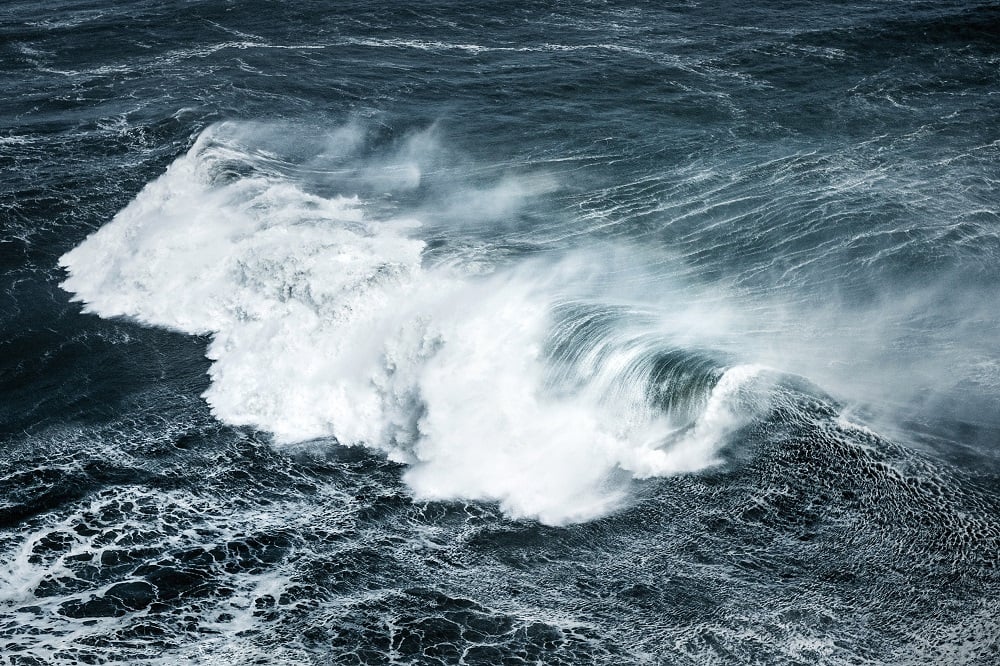Riptides: a maritime phenomenon to understand for a leisurely swim
Explanations and tips on how to behave when confronted to riptide currents
Every summer, many of you come to the Atlantic Ocean to cool off in its turbulent waters. Along the 106 km of Landes beaches, bathers who wish to forget about the summer heat tend to forget to be cautious and therefore they get taken by surprise by the power of the ocean, especially riptides. In this article, we explain to you the rip tide phenomenon and tell you the behaviour to adopt so you can bathe safely.
What is a riptide?
Called « baïne » in the South West of France, a riptide, also called “bâche” in Brittany and in the Manche department, is similar to a large natural water basin. Very active on Landes beaches, riptides attract bathers and their kids because of their quiet aspect, absence of waves, and warm temperatures. However, they are responsible for many frights and drownings every summer because of their strong current that pull bathers out to sea in less than 2 minutes.
One needs to know that this phenomenon happens in many places of the world and especially in the USA and Australia. In France, this phenomenon is mostly important on the Atlantic coast and especially in the Landes where swells and tides are the strongest. That is why it is necessary to get informed on the swell conditions but also tides. To organise your beach outings safely, have a tide indicator in your house so you can check at a glance the state of the tide before going bathing.

© Studio 255
But, in concrete terms, how does a rip current form?
It is nature that creates riptides as sand beaches alter with the waves and tides that may show or hide those basins filled with water.
When waves break on the beach, they pull sand out to sea, forming progressively a sandbank. Under the action of waves, a breach opens in the sandbank and thus the tide triggers the formation of this basin, that is to say the creation of a rip tide.
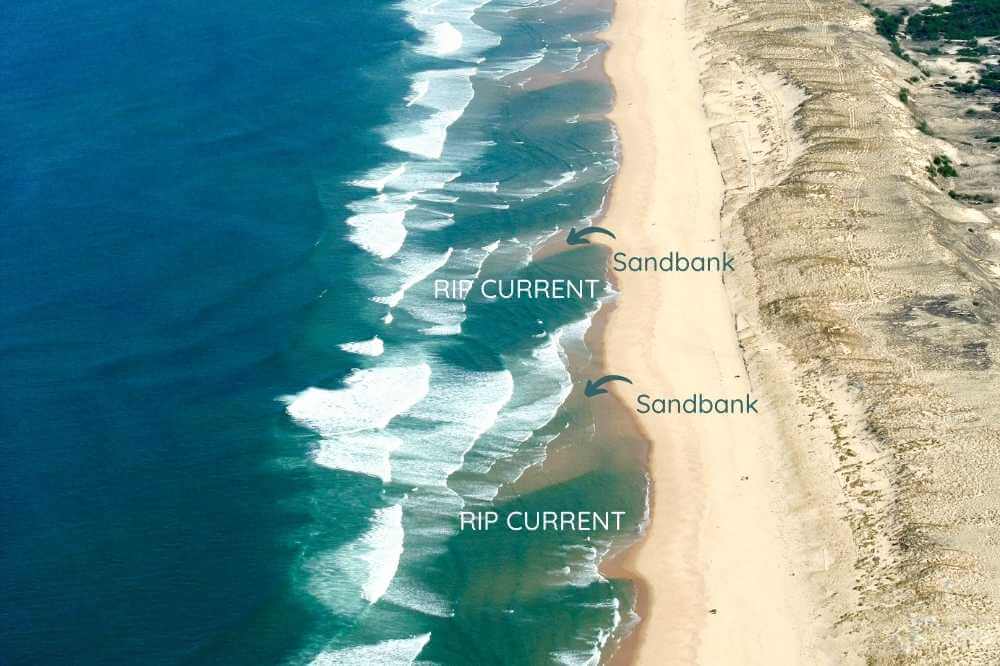
This natural pool on the beach may seem inoffensive but under the water a whole mechanism is triggered, making it a dangerous zone.
Near the shore, some waves will break on the shallowest areas, that is to say sandbanks. As riptides are deeper, waves are rarer, and that is why bathers are likely to rush into them.
However, crushing waves around a riptide will exert a force on water bodies, creating whirlpools that will trigger the formation of a strong rip current within the riptide.
Another element also takes part in the formation of this riptide current: the height of the tide. It is during the last 3 hours of the outgoing tide and the first 3 hours of the rising tide that things get complicated for bathers. At half-tide, waves break over sandbanks and cover the riptide with water. It is at this precise moment that waves form a rip current. This riptide will go out to sea through the breach, carrying bathers with it. The narrower and deeper the breach and higher the waves, the stronger it will be. This is why it is important to consult tide times before heading off to the beach.
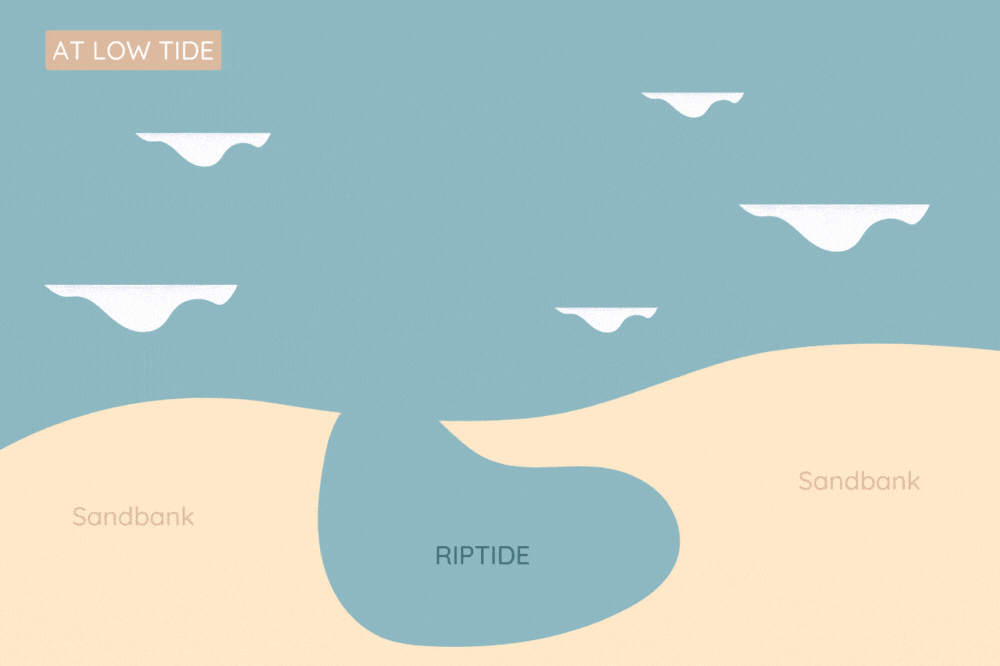
The right behaviour to adopt when confronted to a riptide
Many accidents happen every summer on the Landes coast, like on the entire Atlantic coast, because of strong riptide currents. To avoid finding yourself in a delicate situation, we are going to explain to you how to spot a riptide and how to behave if you happen to be pulled out to sea by its current.
First of all, if you wish to bathe on our beautiful Landes beaches, it is important to know how to spot a riptide.
How to spot a riptide? At low tide, you will not find it difficult to spot a riptide on the beach. Its basin-like shape and the numerous children wading in its warm and calm water are good indicators of its location.
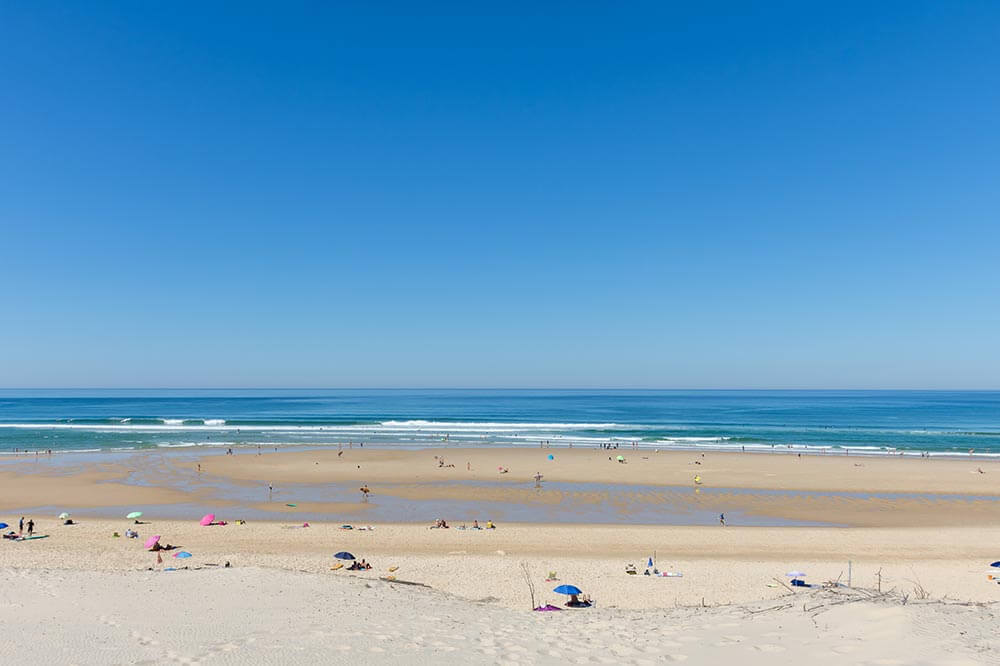
Once you arrive on the beach, if the riptide is already covered with water, all you need to do is observe carefully the bathing area. Beware of calm and waveless water corridors! If you see breaking waves all around, it is a sign of riptide current.
The first tip we give you is to go to supervised beaches where bathing areas are located between bi-colour flags red and yellow. There, you can swim serenely under the supervision of lifeguards.
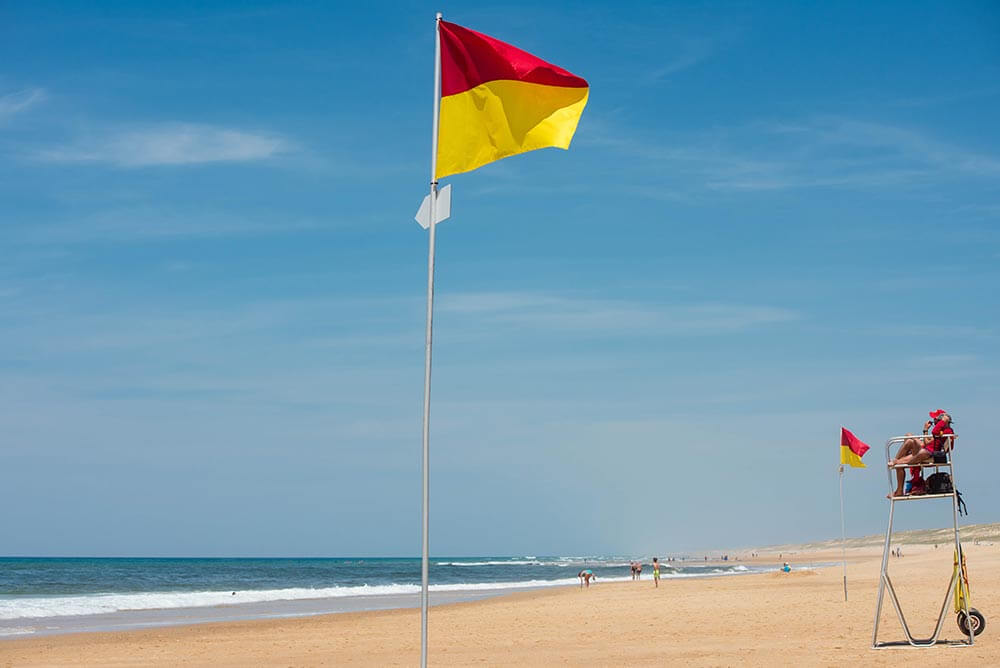
Riptides are numerous on the Aquitaine coast and are likely to be present every 400 meters or so. If you spot one, do not bathe in it but look for a safe place to swim instead. Do not hesitate to ask for advice from surfers or locals who are present on the beach.
But what to do in a rip current? If you happen to be caught by a riptide current, do not panic and let yourself be carried away by the current until the water gets calmer. At any cost should you swim against the current. The ocean will always be stronger than you and all you will do is exhaust yourself and end up drowning.
Keep your strength to make distress signals to lifeguards and swimmers around you by gesticulating. You can also try to get out of the current by swimming parallel to the beach. Once you do not feel the effect of the current anymore, use the waves to get back to the shore.
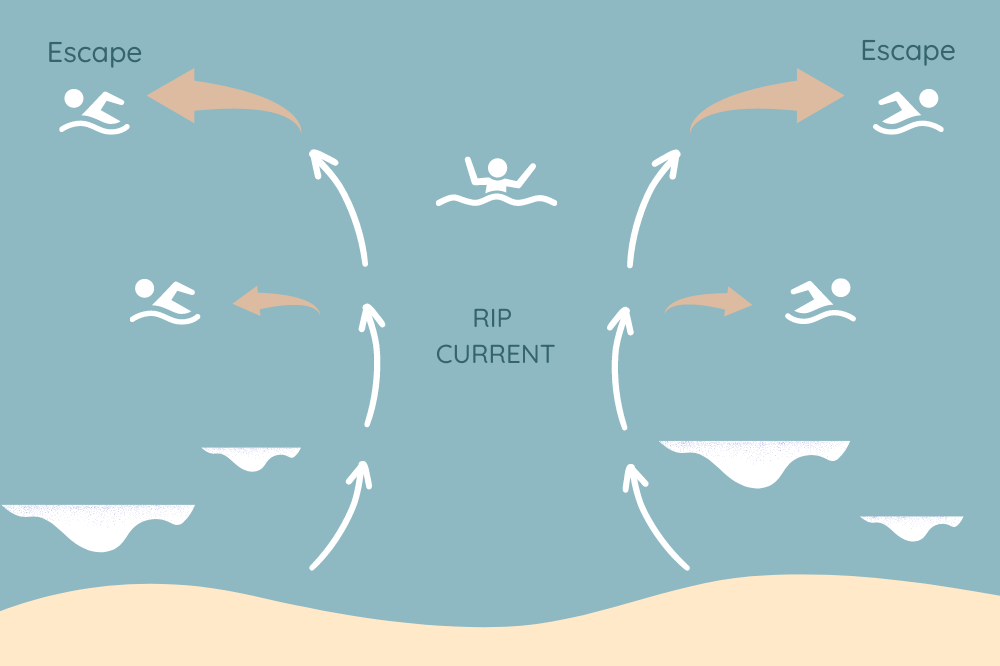
Even if bathing in calm water is tempting, you must not forget that riptides are dangerous. It is strongly recommended to bathe where waves break, even if it may frighten some people. This summer, remain cautious and enjoy the freshness of the ocean safely!

